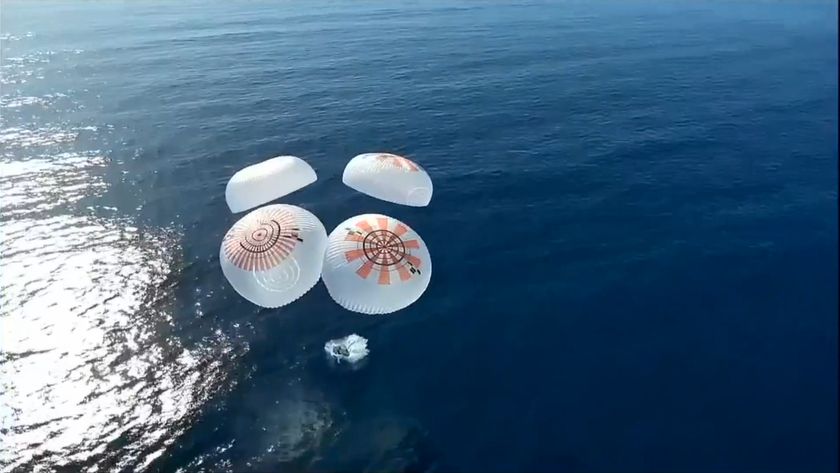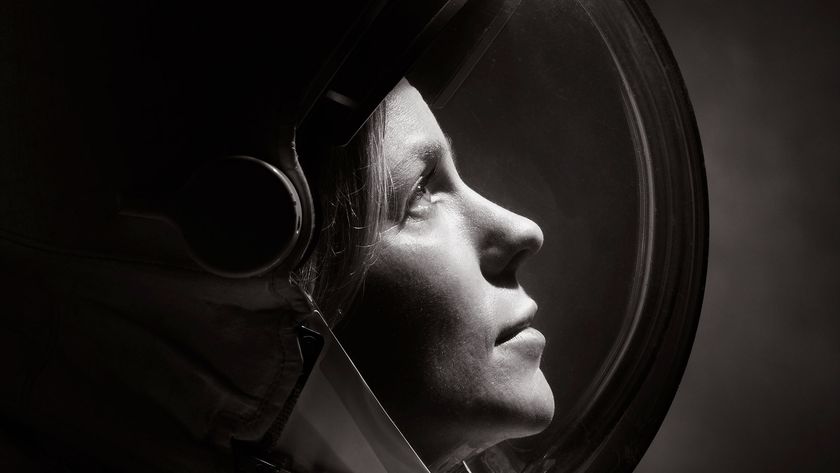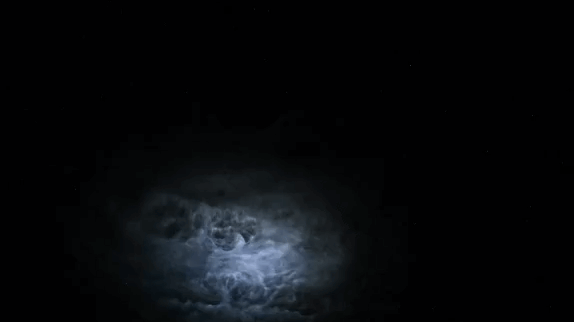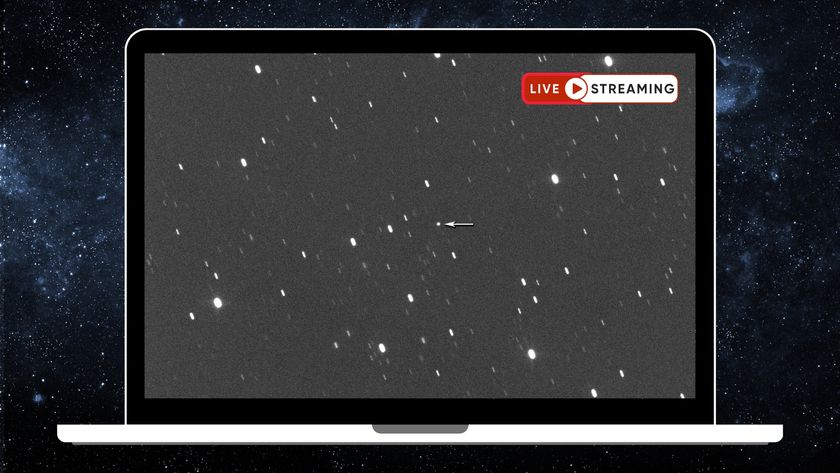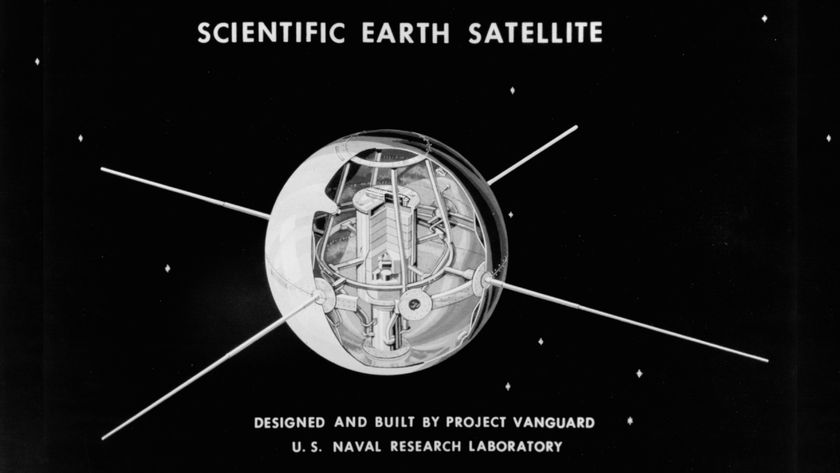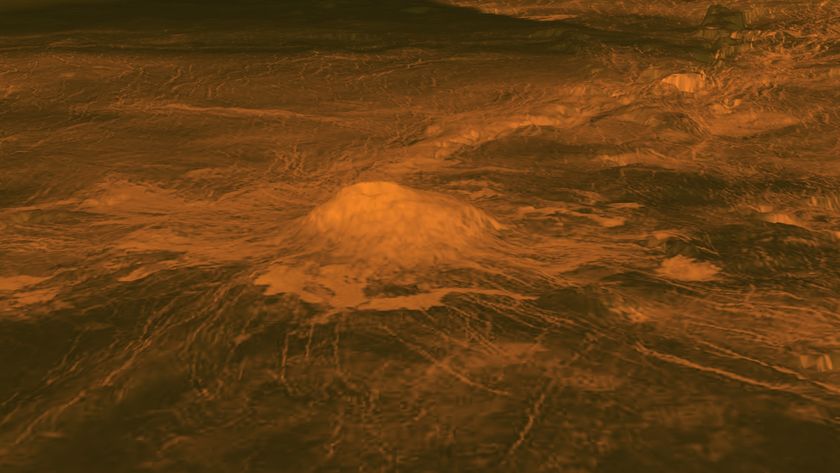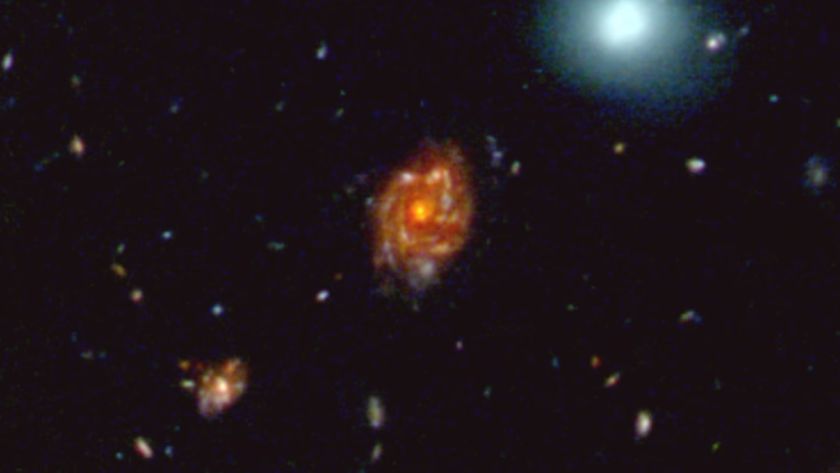Saturn's Moons Engage in Cosmic Paintball Fight

Five of Saturn's inner moons are engaged in a cosmicpaintball fight, pelting each other with particles that leave bright, colorfulsplotches and may be the source of a Pac-man feature on one of the satellites.
NASA's Cassinispacecraft recently spotted reddish and blue splashes on the icy surfacesof Mimas, Enceladus, Tethys, Dione and Rhea. The colors are helping scientistsmap out how material travels between these moons of the ringed planet, andthey're highlighting how "space weathering" can impact bodies in oursolar system, researchers said. [New photo of colorful Saturn moon.]
The discovery may also help explain the mysterious Pac-Manheat patternCassini spotted on Mimas earlier this year, scientists said.
"The beauty of it all is how the satellites behave as afamily, recording similar processes and events on their surfaces, each in itsown unique way," said study lead author Paul Schenk, of the Lunar andPlanetary Institute in Houston, in a statement. "I don't think anyoneexpected that electrons would leave such obvious fingerprints on planetarysurfaces, but we see it on several moons, including Mimas, which was oncethought to be rather bland."
The research is detailed in a recent online edition of thescience journal Icarus.
Enceladus: The aggressor
In the new study, Schenk and his colleagues used raw imagestaken by Cassini from 2004 to 2009, to produce new, high-resolution globalcolor maps of the five Saturn moons.
Get the Space.com Newsletter
Breaking space news, the latest updates on rocket launches, skywatching events and more!
The new maps incorporate images shot through visible-light,ultraviolet and infrared filters. Scientists processed the photos to revealdetails the human eye can't detect.
The chief aggressor in the Saturnian particle paint warappears to be icy Enceladus, researchers said.
Mysteriousice geysers blast from the south polar region of this small moon. Particlesfrom these icy jets make up most of Saturn's misty E ring, and they also appearto splatter Tethys, Dione and Rhea.
These three moons run head-on into Enceladus' spray as theyorbit Saturn, and the gunk leaves a coral-colored stain on their icy surfaces,researchers said.
Enceladus' spray also tags Mimas, but it hits the moon'strailing side. This probably occurs because Mimas orbits inside the path ofEnceladus ? or closer to Saturn ? while Tethys, Dione and Rhea are on theoutside, scientists said.
But Enceladus doesn't emerge from the paintball fightunscathed: Some of its own icy material blows back onto the moon, dyeing partsof its surface bright blue.
Scientists aren't sure why the frost stains the other moonspinkish and Enceladus blue, but they're working on figuring it out.
Mimas' Pac-Man pattern
On Tethys, Dione and Rhea, darker, rusty reds paint the entire trailinghemisphere ? the side that faces backward in the orbit around Saturn,scientists said. These colors are thought to be caused by tiny particle strikesfrom circulating plasma ? an electrically charged form of matter similar to gas? in Saturn's magnetic environment.
In addition, Mimas and Tethys both sport a dark bluish band. The bands matchpatterns that might be produced if the surface were being irradiated byhigh-energy electrons drifting in a direction opposite to the flow of plasma inthe magnetic bubble around Saturn, researchers said.
Scientists are still figuring out exactly what is happening,but the electrons appear to be zapping the Mimas surface in a way that matchesthe Pac-Man thermal pattern detected by Cassini's composite infraredspectrometer, Schenk said.
Schenk and his colleagues also found a unique chain of bluish splotches alongthe equator of Rhea that re-opens the question of whether Rhea ever had a ringaround it. The splotches do not seem related to Enceladus, but rather appearwhere fresh, bluish ice has been exposed on older crater rims.
Though scientists recently reported that they did not seeevidence in Cassini images of a ring around Rhea, the authors of the new studysuggest the crash of orbiting material ? perhaps a ring ? to the surface ofRhea in the not-too-distant past could explain the bluish splotches.
"Analyzing the image color ratios is a great way to really enhance theotherwise subtle color variations and make apparent some of the processes atplay in the Saturnsystem," said Amanda Hendrix, Cassini deputy project scientist atNASA's Jet Propulsion Laboratory, Pasadena, Calif. "The Cassini imageshighlight the importance and potential effects of so-called 'space weathering'that occurs throughout the solar system ? on any surface that isn't protectedby a thick atmosphere or magnetic field."
- Cassini'sGreatest Hits: Photos of Saturn
- Gallery:Cassini's Latest Discoveries
- SaturnMoon's Heat Glow Looks Just Like Pac Man
Join our Space Forums to keep talking space on the latest missions, night sky and more! And if you have a news tip, correction or comment, let us know at: community@space.com.

Space.com is the premier source of space exploration, innovation and astronomy news, chronicling (and celebrating) humanity's ongoing expansion across the final frontier. Originally founded in 1999, Space.com is, and always has been, the passion of writers and editors who are space fans and also trained journalists. Our current news team consists of Editor-in-Chief Tariq Malik; Editor Hanneke Weitering, Senior Space Writer Mike Wall; Senior Writer Meghan Bartels; Senior Writer Chelsea Gohd, Senior Writer Tereza Pultarova and Staff Writer Alexander Cox, focusing on e-commerce. Senior Producer Steve Spaleta oversees our space videos, with Diana Whitcroft as our Social Media Editor.



